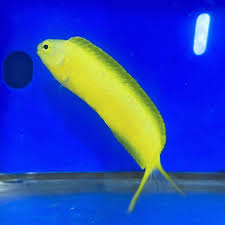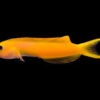An Overview of Dragons and Their Influence on Modern Chinese Culture

Dragons, deeply ingrained in Chinese culture, are more than just mythical creatures. In modern China, they remain an important symbol, representing power, strength, wisdom, and good fortune. From ancient myths and imperial history to contemporary art, design, and even business, dragons have been pivotal to Chinese identity. This article provides an overview of the dragon in modern Chinese culture, exploring its historical roots, its symbolic significance, and its role in various sectors of modern life.
Historical Roots of the Dragon in Chinese Culture
The Chinese dragon, or long (龙), is an ancient symbol with deep roots in Chinese mythology and history. Unlike Western depictions of dragons as terrifying, destructive beasts, Chinese dragons are benevolent and auspicious, representing harmony with nature and cosmic balance. They are seen as protectors and bringers of prosperity. The dragon has been a powerful symbol in Chinese culture for over 4,000 years, appearing in the earliest dynastic records, including artifacts from the Shang Dynasty (1600–1046 BCE).
According to ancient Chinese mythology, the dragon is a hybrid creature that combines the characteristics of different animals, including the body of a serpent, the claws of an eagle, the scales of a fish, and the horns of a deer. The dragon’s versatility as a symbol is reflected in its association with numerous elements such as water, weather, the emperor, and cosmic balance.
The connection between the dragon and the emperor became especially significant during the imperial era, where the emperor was often referred to as the “Son of the Dragon.” The five-clawed dragon, in particular, was reserved for the emperor, symbolizing his divine right to rule. This relationship between the dragon and the emperor persisted for centuries, leaving an indelible mark on Chinese art, culture, and society.
Symbolic Significance of the Dragon
In modern Chinese culture, the dragon retains a powerful symbolic significance. It is viewed as a symbol of power, authority, and prosperity. The dragon represents the connection between heaven and earth, embodying the harmonious relationship between the natural and supernatural worlds. As such, it has always been closely linked to the emperor and to the nation’s ideals of unity and strength.
The dragon is also a symbol of good luck and is often used to bring blessings in times of difficulty. It is believed that the presence of the dragon can ward off evil spirits and bad luck, promoting peace and stability. In various Chinese traditions, the dragon is associated with water, which governs rain, rivers, and seas—essential elements for the prosperity of agriculture and civilization.
Additionally, the dragon holds great importance during cultural and religious celebrations. The most notable example is the Chinese New Year, where dragon dances are performed to scare away evil spirits and usher in good fortune for the coming year. These performances are a vibrant part of the celebrations, with large dragon puppets manipulated by teams of dancers, bringing joy and excitement to the festivities.
Dragons in Modern Chinese Art and Design
The dragon has continued to evolve as a symbol in modern Chinese art and design, often merging with contemporary aesthetics while maintaining its traditional symbolism. Today, the dragon can be found in various forms of art, ranging from traditional paintings and sculptures to graphic design, fashion, and architecture.
1. Traditional Art Forms
In traditional Chinese art, the dragon continues to be a prominent motif. Paintings, embroidery, and sculpture often feature dragons, either as central subjects or as part of larger decorative patterns. For example, in traditional Chinese silk embroidery, dragons can be seen woven into elaborate patterns on robes, banners, and tapestries. These artworks often combine the dragon with other auspicious symbols such as phoenixes, peonies, and clouds, creating intricate compositions that reflect the harmony of nature and the cosmos.
Similarly, porcelain works—especially those produced during the Ming (1368–1644) and Qing (1644–1912) dynasties—feature dragons in dynamic, swirling patterns. These items, which include vases, bowls, and plates, were not only used in everyday life but also served as a form of cultural expression and artistic excellence.
2. Contemporary Art and Graphic Design
In the realm of contemporary art, the dragon has taken on new, sometimes abstract forms. Modern Chinese artists incorporate dragon imagery into various mediums, including painting, sculpture, and digital art. These representations often blend traditional dragon motifs with modern styles, reflecting China’s rapid modernization and its ongoing interaction with global culture.
Graphic designers have also utilized the dragon as a powerful visual tool. Many businesses in China incorporate the dragon into their logos and branding, capitalizing on its cultural significance to convey strength, success, and national pride. For example, Chinese tech companies like Huawei and Alibaba use the dragon as part of their branding, emphasizing their connection to China’s rich cultural heritage.
Additionally, the dragon appears frequently in advertisements, television programs, and movies, where it continues to symbolize power and prestige. With China becoming a major player in the global economy, the dragon has become an international symbol of Chinese influence and modernity.
3. Fashion and Textiles
In the world of fashion, the dragon motif continues to be a source of inspiration. Designers often incorporate dragons into their collections, from luxury couture to streetwear. Chinese fashion designers have long used the dragon as a symbol of national pride, embedding it into their collections in various ways, whether through embroidery, prints, or accessories.
For instance, contemporary Chinese fashion houses such as Ne Tiger and Shanghai Tang have created high-end garments featuring dragon motifs. These designs often combine traditional elements with modern styles, creating pieces that celebrate Chinese heritage while catering to global tastes. The dragon continues to play an important role in these collections, representing the harmonious blend of tradition and innovation.
4. Architecture and Urban Design
Dragons also make their presence felt in modern Chinese architecture. Buildings across China, from traditional palaces to contemporary skyscrapers, often feature dragon imagery in their design. The integration of the dragon in architecture serves not only aesthetic purposes but also symbolizes the cultural and historical significance of the dragon in Chinese life.
In modern urban planning, especially in the design of government buildings, monuments, and public spaces, the dragon continues to be used as a symbol of strength, protection, and unity. These modern buildings often employ dragon imagery in subtle ways, such as in decorative elements, carvings, and sculptures, to evoke a sense of pride and continuity with China’s imperial past.
The Dragon in Chinese Business and Economy
In modern China, the dragon is also closely associated with business and economic growth. Chinese entrepreneurs and business leaders frequently incorporate the dragon into their logos, company names, and branding efforts. The dragon’s image is believed to bring good fortune, success, and prosperity, qualities that are highly valued in the competitive world of business.
For instance, many Chinese businesses in both domestic and international markets adopt the dragon as part of their branding strategies. This use of the dragon in business reflects China’s deep cultural roots and the national pride that accompanies its modern economic achievements. The dragon is not just a symbol of the past but also a representation of China’s future and its global presence.
The Chinese Dragon in Global Context
As China’s economy and cultural influence have expanded globally, the dragon has become a symbol recognized around the world. It is used to evoke Chinese traditions and values, as well as the country’s growing global power. International corporations, particularly those engaged in trade and commerce with China, often incorporate dragon imagery in their marketing strategies to appeal to Chinese consumers and to align themselves with the economic power of China.
The Dragon’s Role in Popular Culture
In contemporary popular culture, the dragon plays a significant role in movies, television shows, literature, and video games. Chinese films, particularly those in the fantasy and historical genres, often feature dragons as characters, weaving them into storylines that draw upon traditional myths and legends.
The dragon has also been adopted in Western popular culture, where it is often used to evoke an exotic, mystical, and powerful aura. From animated films like Mulan to modern blockbusters like Shang-Chi and the Legend of the Ten Rings, dragons have become part of the global pop culture lexicon. However, these representations are sometimes more stylized or fantastical, diverging from the traditional Chinese concept of the dragon.
In video games, dragons are often portrayed as powerful, fearsome creatures, but some Chinese-developed games have aimed to stay true to the dragon’s cultural significance, incorporating themes of strength, wisdom, and protection.
Conclusion
The dragon remains one of the most powerful symbols in modern Chinese culture. Its influence extends beyond traditional art and mythology into the fields of design, business, architecture, and popular culture. As China continues to grow as a global superpower, the dragon has become a symbol of its cultural pride and national strength.
In both traditional and contemporary forms, the dragon continues to evoke a sense of awe, reverence, and inspiration. Its presence in modern Chinese life reflects the enduring legacy of this ancient symbol, which has evolved to meet the needs of a rapidly changing world. Whether in the context of art, business, or cultural heritage, the dragon will continue to play a central role in shaping the identity of modern China.


